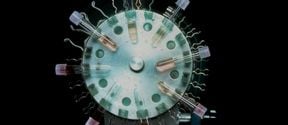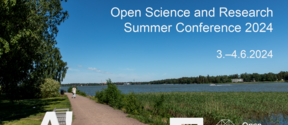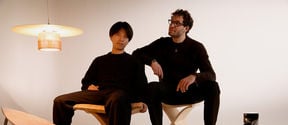Further development of brain research instrument receives seven-figure sum in funding
The European Commission has granted funding of 4 million euros for a three-year period for the BREAKBEN project ('Breaking the Nonuniqueness Barrier in Electromagnetic Neuroimaging') developing neurotechnology. The portion of the funding for the Finnish partners in the project, Aalto University, HUCH, VTT Technical Research Centre of Finland and Elekta Ltd, amounts to 2.4 million euros. The project is also participated by University of Chieti in Italy and Ilmenau University of Technology and Physikalisch-Technische Bundesanstalt Berlin in Germany.
The purpose of the development work is to improve the accuracy of brain recording and to measure electrical conductivity distribution within the brain. If the project succeeds in this, it will be possible to locate MEG signals notably more reliably and accurately than previously.
'We do not have to start from scratch in developing the instrument based on extremely low frequency magnetic field technology. Test equipment built in an EU project in 2008–2012 indicated that constructing a hybrid instrument appropriate for clinical and neuroscientific work is within the realm of possibility', explains Academy Professor Risto Ilmoniemi of Aalto University, the scientific coordinator of the project.
Ilmoniemi describes the challenges of developing the device as follows: 'Measuring very small magnetic fields in the brain in between the powerful magnetic pulses required by magnetic resonance imaging is like examining the wing of a butterfly under a microscope during a forceful earthquake'.
Multidisciplinary collaboration
The project, which will commence at the beginning of next year, aims at building a combination instrument suitable for hospital use. HUCH has a significant role in this. MEG measurements are conducted on patients in hospital conditions in the BioMag Laboratory of the Meilahti Hospital, and, as the findings are interpreted by doctors, the expertise of medical professionals can be incorporated in the project.
From the left: Risto Ilmoniemi, Jyrki Mäkelä and Erika Kirveskari at the BioMag Laboratory with a patient
'At HUCH, we currently use the MEG measurements particularly for locating epileptic foci prior to epilepsy surgery. We may also use MEG to survey significant functional areas of the brain in brain tumour patients in order to prevent damage to these areas during surgery. For example, cerebral infarction and dementia patients as well as persons suffering from chronic pain have been examined in the BioMag Laboratory for new applications', explains Erika Kirveskari, chief physician of clinical neurophysiology at Medical Imaging Center, Helsinki University Hospital.
Jyrki Mäkelä, the head of the BioMag Laboratory, is happy about the funding received by the project: 'The more accurate image quality introduced by the development of equipment helps separating abnormal structures of the cerebral cortex and brain tumours more clearly and locating epileptic foci more accurately than before. We can also develop the measurement of brain pH and temperature values. The recently updated MEG instrumentation at BioMag ensures that the findings of the instrument in development will be compared with the most high-quality measurements currently available.'
'The prototype of the combination instrument will utilise sensors developed by VTT. VTT is a pioneer in developing ultrasensitive sensors used in magnetic imaging of low-frequency fields', notes Senior Researcher Mikko Kiviranta of VTT. 'We have never before built our sensors to sustain such major knocks and to quiet down back to measurement conditions so quickly. But the best way to create technological progress involves getting yourself into a pickle.'
'A commercial application of this research cooperation is a further, significant aim, and thus the medical instrument manufacturer Elekta Ltd is involved in the project. I believe that the measurements conducted in the hospital environment and the simultaneous research and instrument development will finally make it possible to realise this aim', Risto Ilmoniemi notes.
In total, 670 projects applied for the Future and Emerging Technologies Open funding. Only 11 of them, i.e. 1.6 %, were granted the funding.
Further information:
Project Leader, Academy Professor Risto Ilmoniemi
[email protected]
Tel. +358 50 556 2964
Department of Neuroscience and Biomedical Engineering, Aalto University School of Science
http://nbe.aalto.fi/fi/
- Published:
- Updated:
Read more news

Robotics needs safe behavior patterns
Robotics and autonomous systems are developing rapidly. Algorithms that withstand disturbances and uncertainties in the system model and environment are critical for development.
A new way to do controlled experiments in medicine: simulate the control
Generative AI could augment randomized controlled trials.
Open Science and Research Summer Conference 2024 will be hosted by Aalto University
Open Science and Research Summer Conference 2024 will be held at Aalto University’s Otaniemi campus and in Zoom 3.–4.6.2024. Please register by May 3.